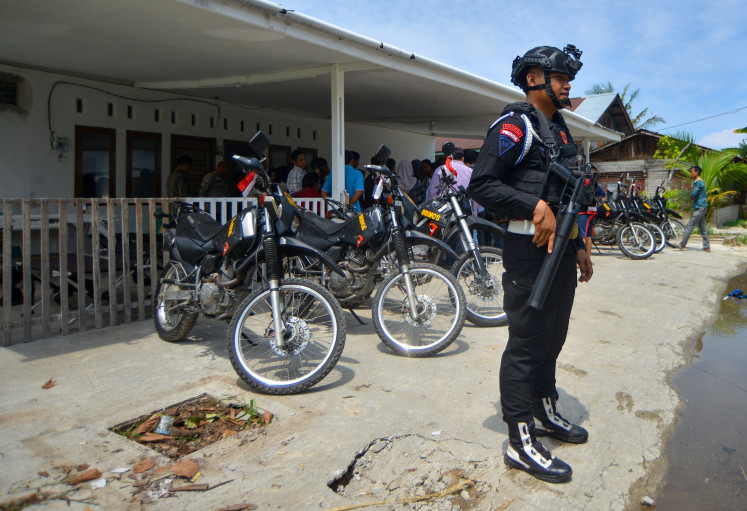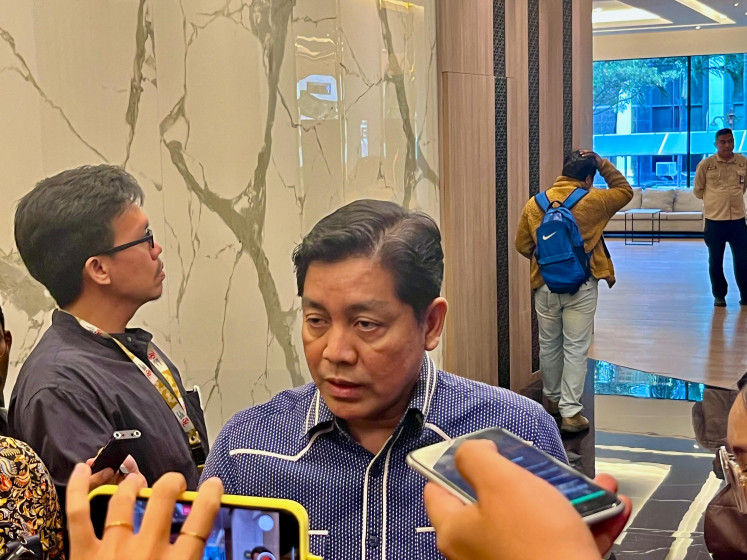Popular Reads
Top Results
Can't find what you're looking for?
View all search resultsPopular Reads
Top Results
Can't find what you're looking for?
View all search resultsJakarta govt gives up on monorail project
The Jakarta administration has put its monorail project to the side with Governor Fauzi Bowo stating that he will put what remains of the abandoned scheme to another use
Change text size
Gift Premium Articles
to Anyone
T
he Jakarta administration has put its monorail project to the side with Governor Fauzi Bowo stating that he will put what remains of the abandoned scheme to another use.
Fauzi said that he was mulling options on using pillars of the aborted project for the elevated Bus Rapid Transit (BRT) lanes.
“We are studying this option and we are considering adopting it. We’ll see,” Fauzi said.
Fauzi also said that the project would be too expensive should the city government decide to press ahead.
“We have done the math on the cost and benefits of continuing this monorail project, and it is going to take a lot,” he said.
He said that the cost would run to billions of rupiah.
“Even if we decide to continue with the project, if only for the first line, it would need between Rp 4 and Rp 4.5 billion for the construction. Who’s going to pay for this? The private sector definitely can’t handle this,” Fauzi said.
Construction of the monorail project was halted in March 2008 by developer PT Jakarta Monorail due to legal and financial problems.
The initial construction left rows of columns along the roads in Senayan, Central Jakarta, and Kuningan in South Jakarta.
The first monorail line, which was expected to cost US$484 million, was planned to be a 14.3-kilometer route connecting Semanggi and Kuningan in South Jakarta, and have a capacity of 120,000 passengers per day.
PT Jakarta Monorail has asked Rp 600 billion (US$68.4 million) in compensation for the halted construction project.
Fauzi said that the cost of building and operating the BRT system over the abandoned MRT
project, which will have a smaller capacity than the monorail, would be cheaper.
The Development and Finance Surveillance Agency (BPKP) said that the city government should only pay a maximum Rp 204 billion in compensation for the aborted project. The initial plan for the monorail project includes three options for the city to pay for the project.
The first option would be to have another private entity funding and managing the project. The second option involved the central government paying up to 42 percent and the city taking up 58 percent. The third option proposed the central government pay for the construction of the track and private companies pay for the trains and stations, under a public-private partnership.
Separately on Wednesday, Jakarta Transportation agency chief Udar Pristono said that the agency was looking into the structural strength and cost of modifying the abandoned monorail pillars for other ends. The agency, however, will not use the pillars for the TransJakarta network.
“But we are looking into the possibility of using the pillars for the construction of another bus-based public transportation,” Udar said.
The agency was currently looking into the possibility of constructing an elevated guided busway system, referring to the O-bahn track design, in which buses ran on a specially built track, combining elements of both bus and rail systems.
“We are not going to incorporate the plan into the construction of TransJakarta Busway corridors 13, 14 and 15,” he said.
Correction
In the story “Jakarta govt gives up on monorail project” published on this page on Thursday, we made an error in printing that the cost of the first line of the monorail project was between Rp 4 and Rp 4.5 billion. The correct figure is between Rp 4 trillion and Rp 4.5 trillion. We apologize for the mistake.
— Edito










